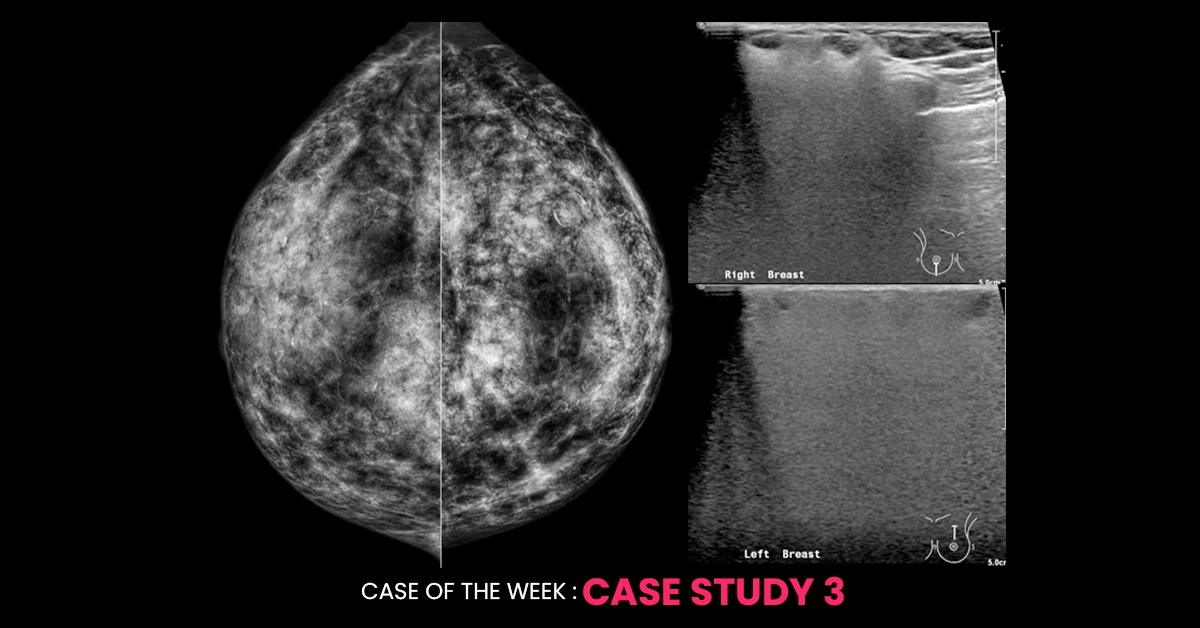Mail Us
contact@biedx.com
contact@biedx.com

The mammogram reveals multiple, round to oval, high-density masses diffusely distributed in both breasts, many of which have peripheral calcifications. These findings represent free silicone granulomas, which were injected for breast augmentation. On ultrasound, the silicone appears as circumscribed cystic masses or dense reverberation artifacts, producing a “snowstorm” appearance.
Free silicone injection for breast augmentation is banned in the USA and some European countries, but it is still performed in some Asian countries. As demonstrated in this case, free silicone injections cause significant artifacts on both mammograms and ultrasounds, potentially obscuring underlying breast cancer. These imaging modalities are nearly non-diagnostic and thus not optimal for screening or diagnostic purposes. Contrast-enhanced MRI should be used for screening and diagnostic purposes in these women.
Sharing a pictorial essay on “Imaging of Augmented Breast”: Krisnan RNK, Chotai N. Imaging Spectrum of Augmented Breast and Post-Mastectomy Reconstructed Breast with Common Complications: A Pictorial Essay. Korean J Radiol. 2021 Jul;22(7):1005-1020. doi: 10.3348/kjr.2020.0779. Epub 2021 Apr 9. PMID: 33938642; PMCID: PMC8236364.
The “snowstorm” appearance is a descriptive term used in breast ultrasound to characterize the presence of free silicone within the breast tissue. This appearance is associated with silicone granulomas, which can form when free silicone is injected for breast augmentation.
Ultrasound Characteristics:
On ultrasound, free silicone appears as circumscribed cystic masses.
There are dense reverberation artifacts associated with these masses.
These artifacts create a “snowstorm” appearance, which is highly indicative of silicone presence.
Mammographic Findings:
Mammograms of patients with free silicone injections typically show multiple, round to oval, high-density masses.
These masses are diffusely distributed in both breasts.
Peripheral calcifications are often seen in association with these masses.
Clinical Context:
Free silicone injection for breast augmentation is prohibited in the USA and several European countries due to its complications and diagnostic challenges.
Despite these bans, the procedure is still performed in some Asian countries.
Diagnostic Challenges:
The presence of free silicone can produce severe artifacts on mammograms and ultrasounds.
These artifacts can obscure the detection of underlying breast cancer, rendering the imaging nearly non-diagnostic.
Because of these limitations, standard mammograms and ultrasounds are not optimal for screening or diagnostic purposes in patients with free silicone injections.
Recommended Imaging Modality:
For women with a history of free silicone injections, contrast-enhanced MRI is recommended.
MRI provides a clearer and more accurate assessment, both for screening and diagnostic purposes.
Conclusion: The “snowstorm” appearance is a critical ultrasound finding indicative of free silicone in the breast tissue. Given the diagnostic limitations posed by silicone artifacts, contrast-enhanced MRI should be the preferred modality for effective screening and diagnosis in affected individuals. This approach helps ensure that underlying breast conditions, including cancer, are not missed.
To provide state-of-the-art education and career growth to radiologists and surgeons for improved patient care through wide availability of highly skilled doctors.
Copyright © 2025 All rights reserved.